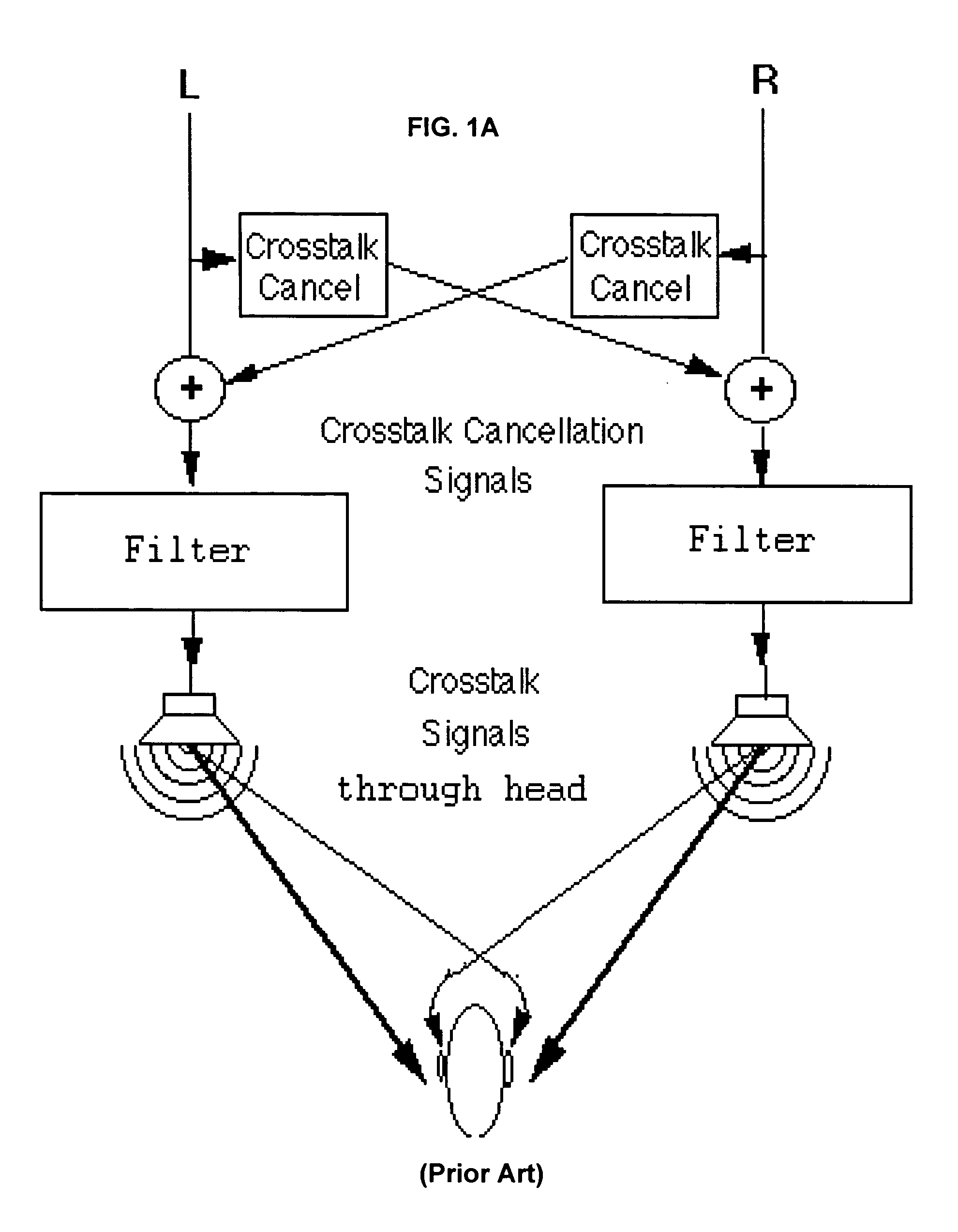Method and circuit for enhancement of stereo audio reproduction
a stereo audio and enhancement technology, applied in the field of stereophonic audio reproduction, can solve the problems of insufficient stereo reproduction of closely spaced loudspeakers, usually unsatisfactory, and total collapse of stereo images
- Summary
- Abstract
- Description
- Claims
- Application Information
AI Technical Summary
Benefits of technology
Problems solved by technology
Method used
Image
Examples
Embodiment Construction
[0059] In the following detailed description, numerous specific details are set forth in order to provide a thorough understanding of the invention. However, it will be understood by those skilled in the art that the present invention may be practiced without these specific details. In other instances, well-known methods, procedures, components and circuits have not been described in detail so as not to obscure the present invention.
[0060] Some embodiments of the present invention relate to a method and a circuit for processing an audio signal. In accordance with some embodiments of the present invention, there is provided an audio processing circuit including a first signal path, a second signal path and an output adder. The first signal path may be configured to allow an input signal to pass through the audio processing circuit substantially unaffected. The second signal path may include a reverberation filter and a cross-talk cancellation filter adapted to receive an output of t...
PUM
 Login to View More
Login to View More Abstract
Description
Claims
Application Information
 Login to View More
Login to View More - R&D
- Intellectual Property
- Life Sciences
- Materials
- Tech Scout
- Unparalleled Data Quality
- Higher Quality Content
- 60% Fewer Hallucinations
Browse by: Latest US Patents, China's latest patents, Technical Efficacy Thesaurus, Application Domain, Technology Topic, Popular Technical Reports.
© 2025 PatSnap. All rights reserved.Legal|Privacy policy|Modern Slavery Act Transparency Statement|Sitemap|About US| Contact US: help@patsnap.com



